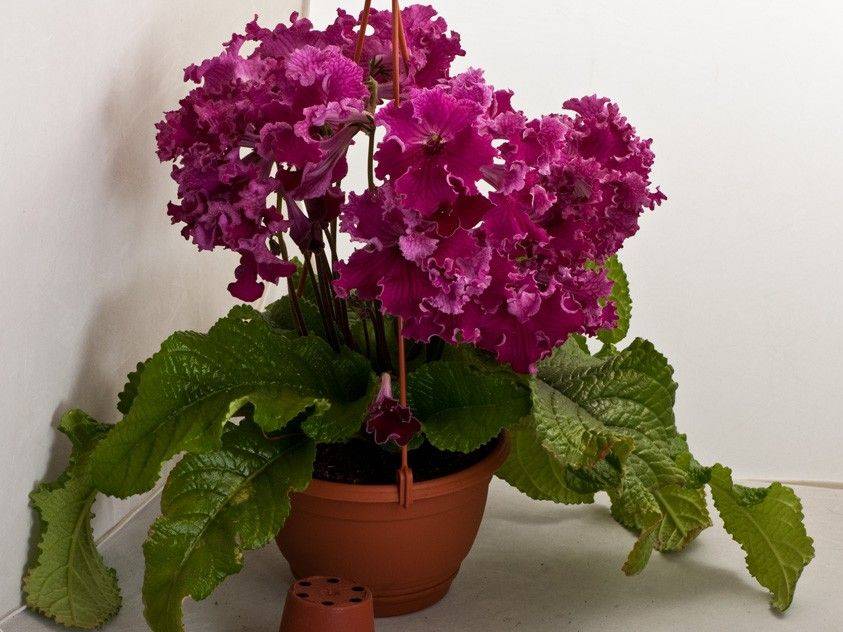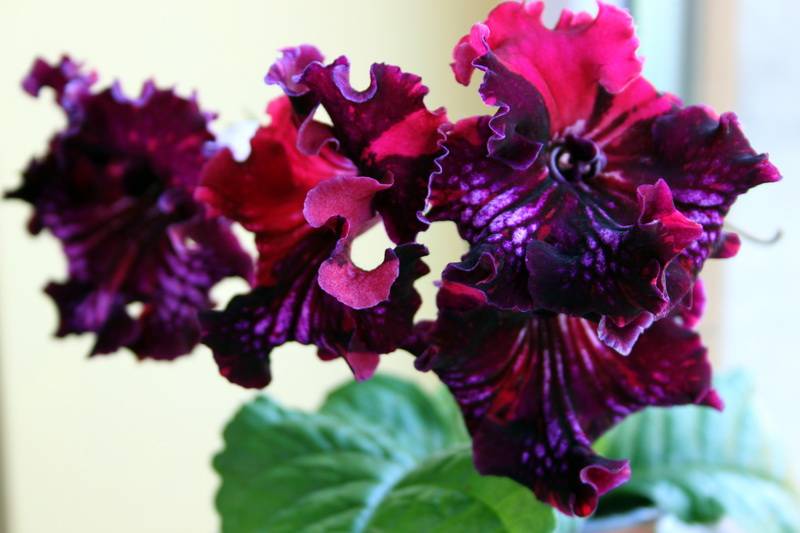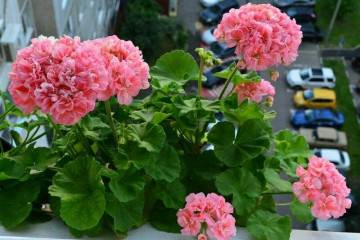Streptocarpus DS 2080 and other varieties of Dimetris selection
Content:
The striking representative of the Gesnerian family, streptocarpus, won popular love. It has an external resemblance to violets. Flowers have high decorative characteristics, long-term abundant flowering.
The history of the appearance and general characteristics of streptocarpus breeding Dimetris
Madagascar is considered the birthplace of culture. In nature, flowers grow in moist forests near water bodies, less often found on mountain peaks and on the sea coast. Breeding varieties are grown at home. The flowers have a wide rosette, lush foliage, large inflorescences and a rich palette of shades. The stems are missing. Streptocarpus DS requires increased attention to itself, but if all recommendations are followed, even a novice florist will cope with its cultivation.
Description of popular varieties of streptocarpus Dimetris
There are many varieties of DS streptocarpus. All of them differ in the shade of the inflorescences, the shape, size and color of the foliage. Flowers have unusual interesting transitions from one shade to another. One part of the petals is lighter and the other is darker. Also, some inflorescences have bright ruffles. The petals can be smooth or double. To understand all the subtleties of different types, their description will help.
DS 2080
This is a new variety with lush, rich foliage in rich green color. Streptocarpus DS 2080 has velvet purple inflorescences, consisting of seven petals.
DS 1920
Streptocarpus 1920 is a very beautiful bush with elongated leaves and lush buds. Terry inflorescences have bright shades, exude an exquisite aroma.
DS 2059
Abundantly blooming semi-double bright silivan. The upper red petals are harmoniously complemented by the lower yellow petals with a mesh. The flower stalks are short, the buds are preserved from July to August.
DS 1726
Streptocarpus 1726 has a long peduncle. Hyper-double openwork buds have a deep unusual color.
DS 1931
The bush is crowned with pink lace inflorescences. Petals with unusual tints are framed with a dark border.
DS Margarita
One of the oldest varieties of margarita has a large rosette. Raspberry lace flower with glossy petals with a white border and many frills. The sturdy peduncle can support the weight of heavy, large carved petals. Lush bloom lasts for a long time.
DS Eternity
Large bright red varieties reach up to 10 cm in diameter. The border is lacy, slightly darker than the main color of the petals. The flowers of the Eternity variety do not fall for several months. The leaves are large, bright green.
DS Ezhkin cat
Fancy variety with medium double inflorescences. The petals are dark purple with white specks. Resistant to dropping.
DS Midnight Poison
Presentable flower with wavy purple flowers. Shedding resistance is average.
DS Fire
The fancy variety has an unusual bud. Semi-double silky petals with an unusual shape and a corrugated edge.
Planting streptocarpus
The rapid development of the root system leads to the fact that the volume of the pot is quickly filled. Therefore, the plant requires frequent transplantation.For young flowers, the procedure is carried out every year, and for adults once every three years. In a pot, on the bottom of which a drainage layer is preliminarily laid, a plant is placed, straightening the roots. Top covered with earth.
Streptocarpus care at home
The health of streptocarpus directly depends on the correctness of agricultural technology. This culture especially needs proper care. It is watered with soft warm water through the drainage hole. Regular hydration can be achieved with capillary moisture.
With each transplant, complex fertilizers (phosphorus, nitrogen and potassium) are introduced into the soil. They provide vigorous growth and abundant flowering.
Lighting and temperature
Streptocarpus Dimetris love good lighting. They feel comfortable in artificial and natural light. Direct sunlight can burn the leaves. The flower loves warmth, does not tolerate sudden changes in temperature.
How streptocarpus reproduces
Reproduction of streptocarpus is carried out in the spring. The procedure is performed in two ways:
- Cuttings. The required number of leaves is cut from the bush and buried into the ground to a depth of 0.5 cm, watered. After the appearance of 3 full-fledged leaves, the sprouts are seated.
- Seeds. The seed is planted in peat tablets. Then the crops are covered with foil and placed in a warm place. After a couple of weeks, sprouts appear, which dive twice before planting in separate pots.
Major pests and diseases
Correct agricultural technology is a reliable protection for the plant. Stagnant dry air and elevated air temperatures are favorable factors for the development of diseases and pest attacks. Aphids, spider mites or thrips may appear on the flower. Lack of moisture, sunlight and violation of the rules of care can cause yellowing and fall of foliage.
Streptocarpus is a beautiful houseplant. Unpretentious care and chic appearance are the advantages of this culture. The variety of colors will satisfy the requirements of the most discerning grower.



















